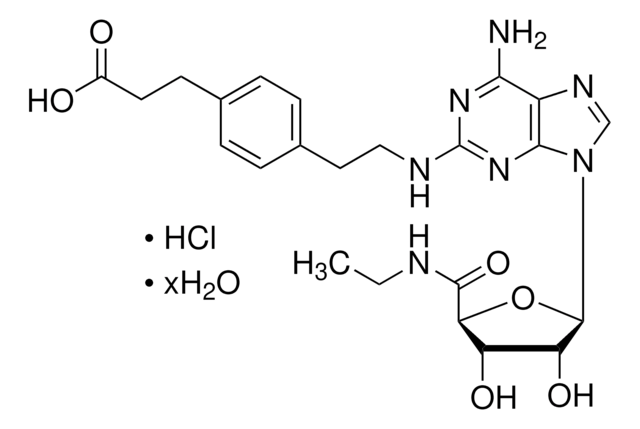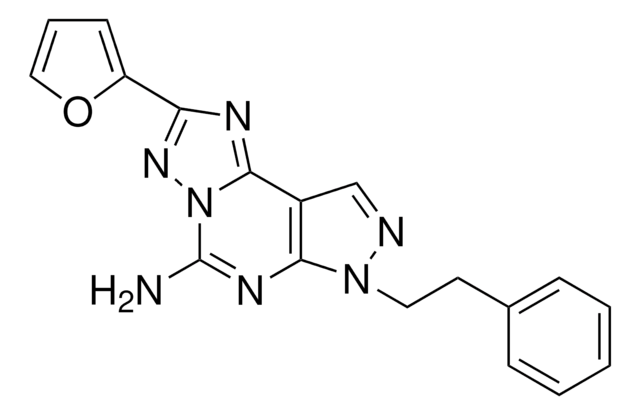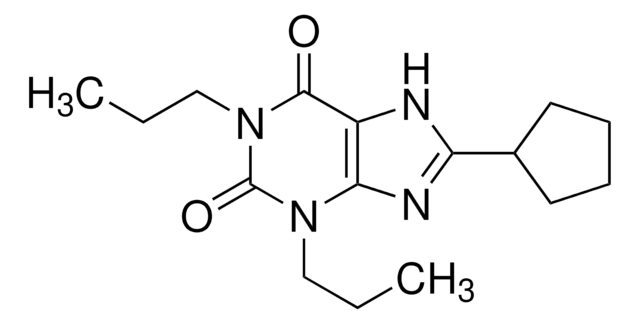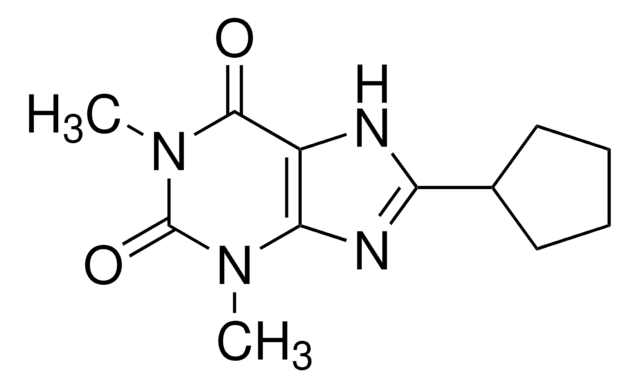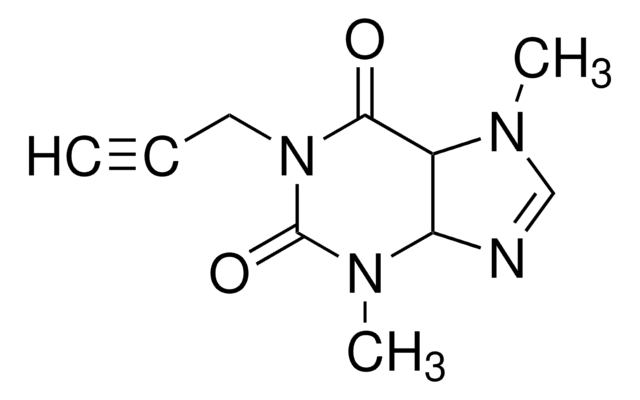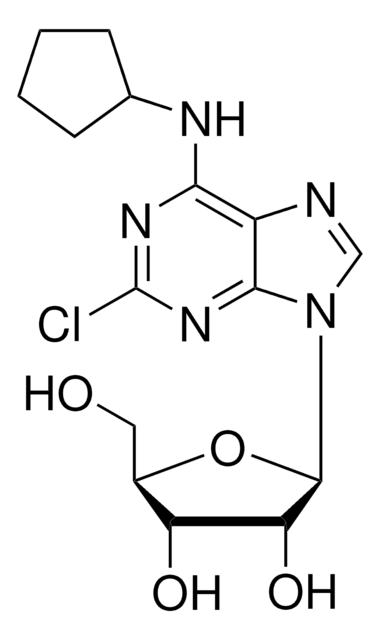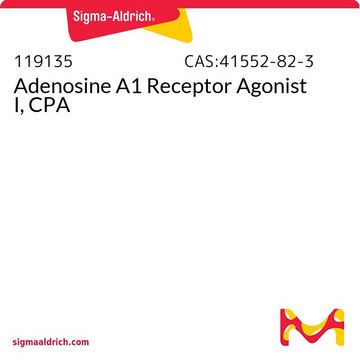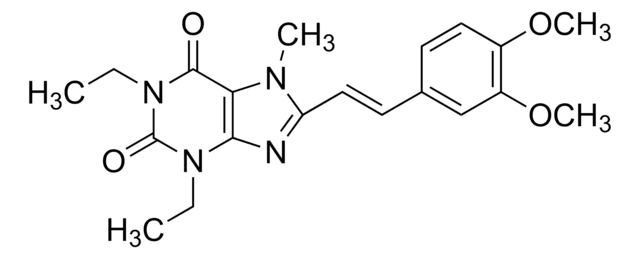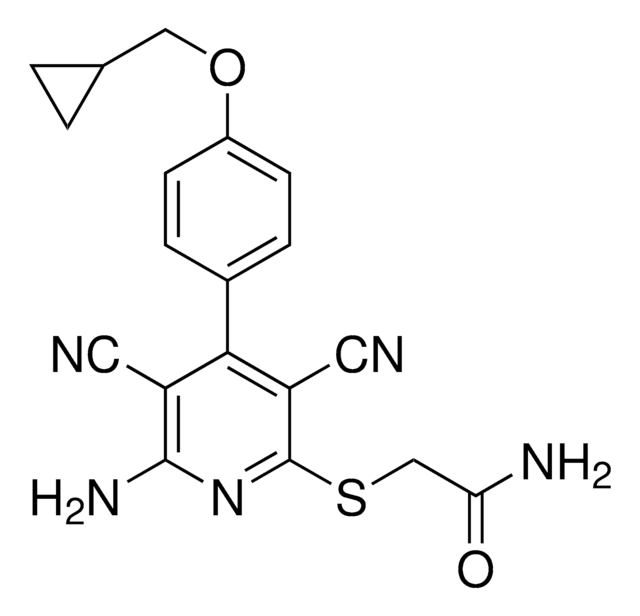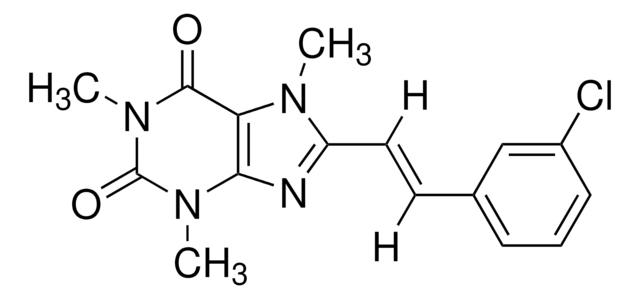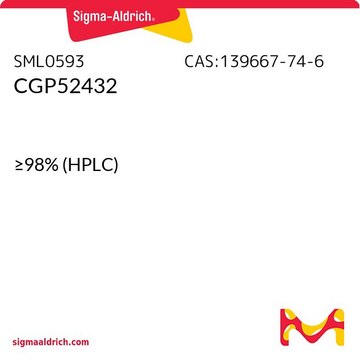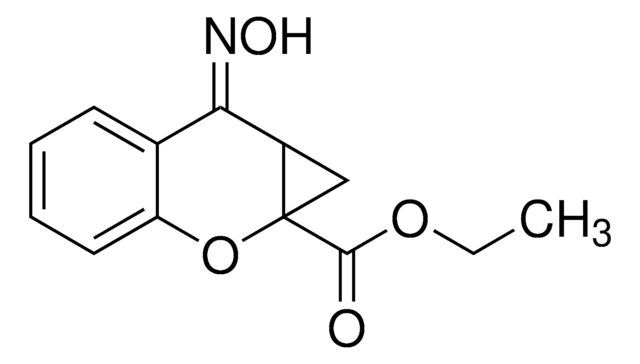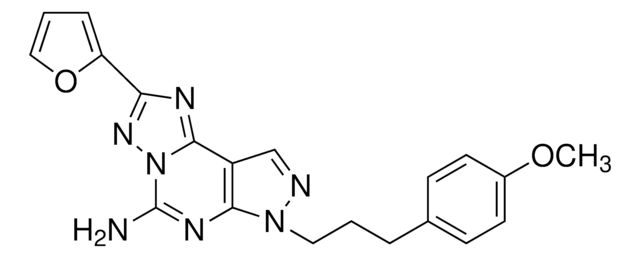C101
8-Cyclopentyl-1,3-dipropylxanthine
solid
Synonym(s):
1,3-Dipropyl-8-cyclopentylxanthine, DPCPX, PD 116,948
About This Item
Recommended Products
form
solid
Quality Level
color
white
solubility
DMSO: >10 mg/mL
0.1 M NaOH: 2 mg/mL
ethanol: 4 mg/mL
H2O: insoluble
εmax
14,800 at 276 nm in ethanol
SMILES string
CCCN1C(=O)N(CCC)c2nc([nH]c2C1=O)C3CCCC3
InChI
1S/C16H24N4O2/c1-3-9-19-14-12(15(21)20(10-4-2)16(19)22)17-13(18-14)11-7-5-6-8-11/h11H,3-10H2,1-2H3,(H,17,18)
InChI key
FFBDFADSZUINTG-UHFFFAOYSA-N
Gene Information
human ... ADORA1(134) , ADORA2A(135) , ADORA2B(136) , ADORA3(140)
rat ... Adora1(29290) , Adora2a(25369) , Adora2b(29316) , Adora3(25370)
Looking for similar products? Visit Product Comparison Guide
Related Categories
Application
Biochem/physiol Actions
Features and Benefits
Signal Word
Warning
Hazard Statements
Precautionary Statements
Hazard Classifications
Eye Irrit. 2 - Skin Irrit. 2 - STOT SE 3
Target Organs
Respiratory system
Storage Class Code
11 - Combustible Solids
WGK
WGK 3
Flash Point(F)
Not applicable
Flash Point(C)
Not applicable
Personal Protective Equipment
Choose from one of the most recent versions:
Already Own This Product?
Find documentation for the products that you have recently purchased in the Document Library.
Customers Also Viewed
Our team of scientists has experience in all areas of research including Life Science, Material Science, Chemical Synthesis, Chromatography, Analytical and many others.
Contact Technical Service
